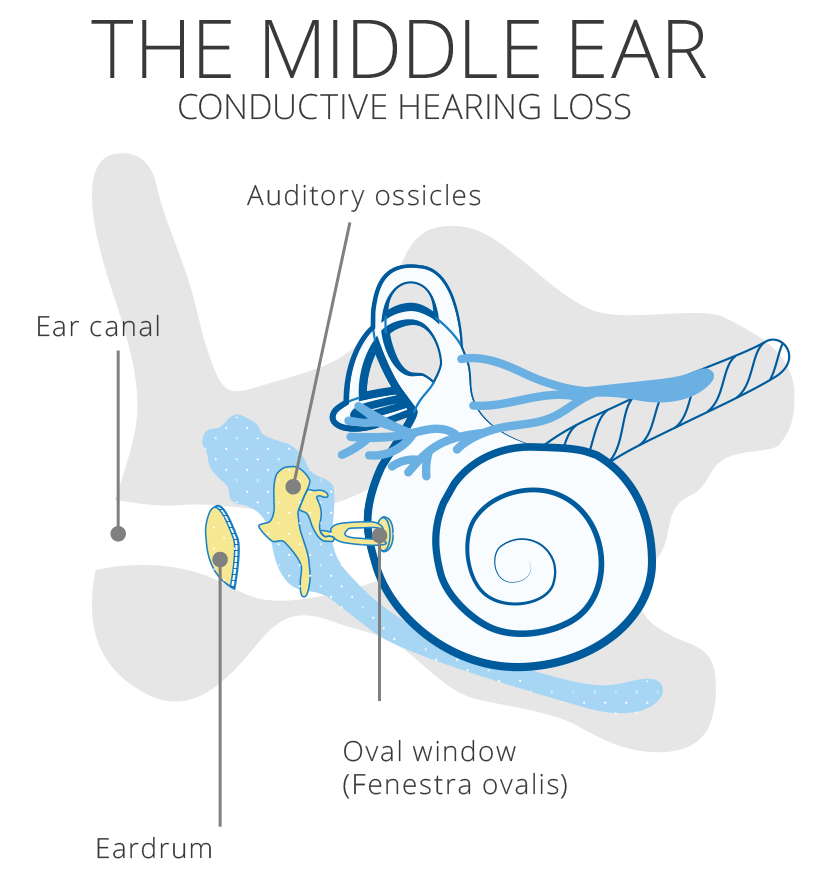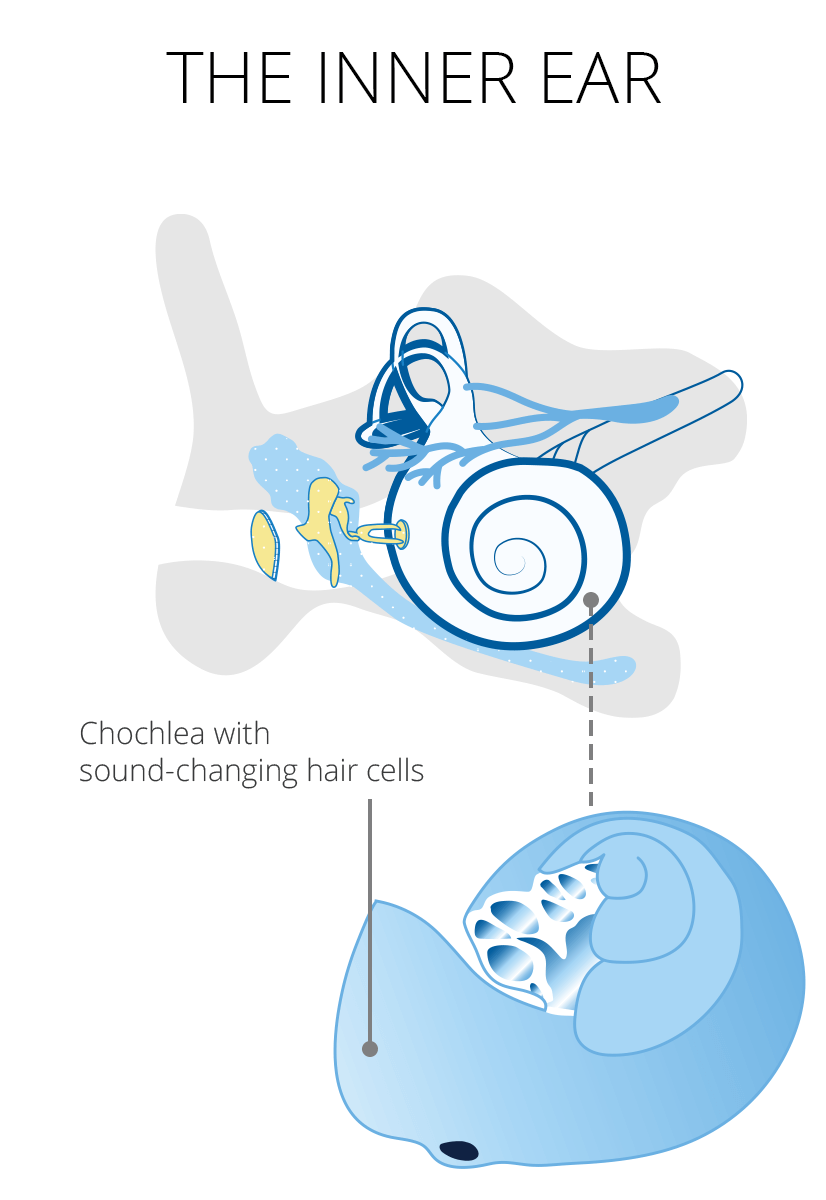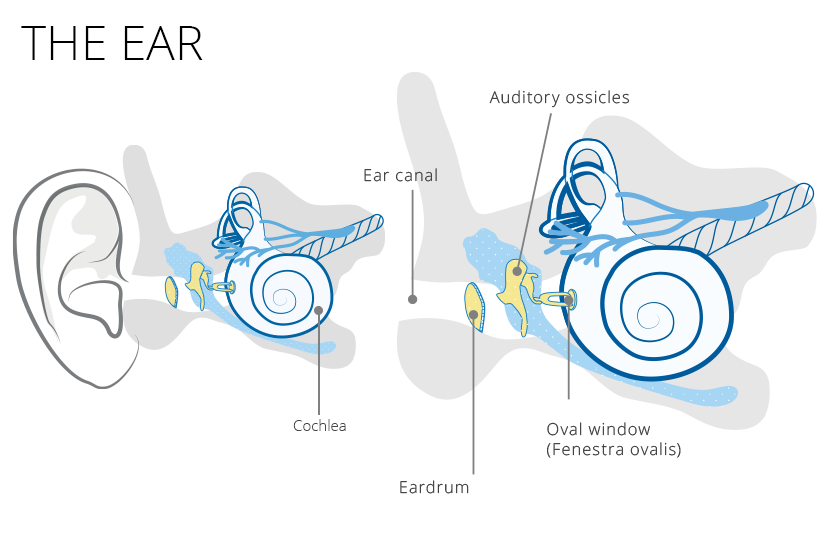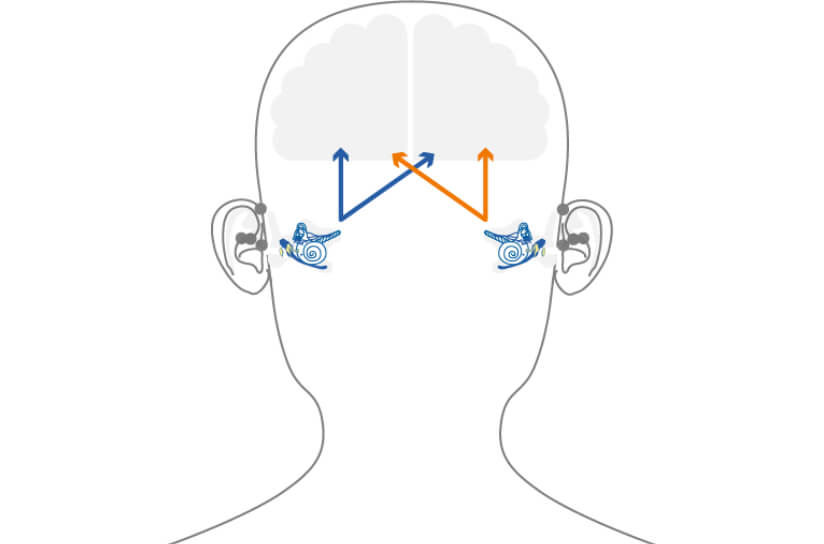
Smart hearing aids from hear.com - world's leading hearing care provider
Recognize and understand hearing loss
How does hearing loss arise – and what different forms are there? All types and causes can be found clearly explained on this page. If you have any further questions, please get in touch with us. Studies show that people often take years to act on their hearing loss as it often develops slowly and is therefore not noticed for a long time. It pays to act quickly!
Not only that, your own quality of life improves enormously with modern hearing aids. The effects of hearing loss can also be minimized if you take action early on. The exact treatment for hearing loss usually depends on how severe it is.
Table of Contents
- 3 forms of hearing loss
- Conductive hearing loss
- Sensorineural hearing loss
- Combined hearing loss
- Auditory processing and perception disorder
There are 3 types of hearing loss
Modern medicine basically differentiates between three types of hearing loss:
- Conductive hearing loss
- Sensorineural hearing loss
- Combined hearing loss
There is also auditory processing and perception disorder (AVWS). All forms have one thing in common: They reduce hearing ability. They have a direct impact on your own quality of life. Conversations become more and more exhausting, the television is playing louder and louder and noises we have grown fond of, such as the whispers of children or grandchildren, can suddenly no longer be heard.

Conductive hearing loss
With conductive hearing loss, the sound vibrations that your ear picks up are not transmitted to the inner ear due to a disorder in the outer or middle ear. The mechanical sound transport through the ear is impaired. The consequence: the hearing ability decreases. Above all, you no longer perceive language clearly. Hearing is harder on all frequencies.
A distinction is made between temporary and permanent conductive hearing loss. Temporary conductive hearing loss occurs, for example, when the ossicles are blocked after an otitis media. It can be remedied with medication or surgery. With permanent conductive hearing loss, the transmission of sound to the inner ear is permanently disturbed. This form of hearing loss can be completely or largely remedied if you increase the sound pressure with a hearing aid. Our experts will be happy to advise you on the selection of the right hearing aid.
Causes of conductive hearing loss
Conductive hearing loss can have many causes. In order to find the right therapy, it is important whether it is a temporary or permanent problem in the outer or middle ear. Temporary causes include an earwax plug (cerumen obturans), a foreign body in the ear canal or an inflammation of the ear canal (otitis externa). Permanent disorders are, for example, auricular malformations, malformations of the auditory canal, chronic middle ear infections or a hole in the eardrum. Otosclerosis – a disease of the bone that surrounds the inner ear – can also be the cause of permanent conductive hearing loss.
In the area of the oval window of the cochlea, the actual hearing organ in the inner ear, a bone forms and grows irregularly. As a result, the stirrup plate stiffens more and more and sounds are not properly transmitted.

Sensorineural hearing loss
In the case of sensorineural hearing loss, both the hearing organ with its sound-converting hair cells and nerve components only function to a limited extent. Damage to the inner ear prevents certain frequencies from reaching the brain. As a result you do not perceive the overall sound at all or perceive it unnaturally. It can be assumed that there is a “different hearing”, i.e. falsified understanding of speech, because speech signals of high frequencies, such as the sounds p, k, f, h, s, sch, fail.
Similar sounding words, but also vows such as a, e, i, o and u often lead to hearing problems. How you perceive volume is hardly changed with sensorineural hearing loss. Overall, this loss of hearing function can be successfully compensated for with a hearing aid.
What happens with sensorineural hearing loss
It is assumed that there is a “different hearing”, i.e. falsified understanding of speech, because speech signals of high frequencies, such as the sounds p, k, f, h, s, sch, fail. Similar sounding words, but also vows such as a, e, i, o and u often lead to hearing problems. How you perceive volume is hardly changed with sensorineural hearing loss. Overall, this loss of hearing function can be successfully compensated for with a hearing aid. Sensorineural hearing loss can be triggered by:
- Damage to the inner ear from noise
- Sudden hearing loss
- Viral infections such as mumps, measles, and rubella
- Age degeneration (presbycusis)
- Genetic hearing loss

Combined hearing loss
This is what happens with combined hearing loss:
Combined hearing loss is made up of the two types of hearing loss that we have already mentioned: conductive hearing loss and sensorineural hearing loss. This means that both the outer or middle ear and the inner ear are damaged. How exactly this type of hearing loss affects your hearing depends on which hearing loss is more pronounced.
The method of treatment depends on how severe the hearing loss is. Treatment with medication may be sufficient for mild or temporary hearing loss. For moderate to severe hearing loss, hearing aids are usually used.
In very severe cases of combined hearing loss, it may be necessary to have a bone conduction implant placed. An ENT doctor or hearing aid acoustician usually decides which treatment method is the right one in each individual case.
Combined hearing loss is typically caused by:
Combined hearing loss can be caused by the involvement of the inner ear. The independent causes of conductive and sensorineural hearing loss (sensorineural hearing loss) also come into consideration.
Auditory processing and perception disorder

An auditory processing and perception disorder means that the information heard is not properly processed. The disorders affect the auditory nerve, which forwards the information to the cerebrum. In rare cases, the central nervous system is also affected. However, the outer ear is usually not affected.

